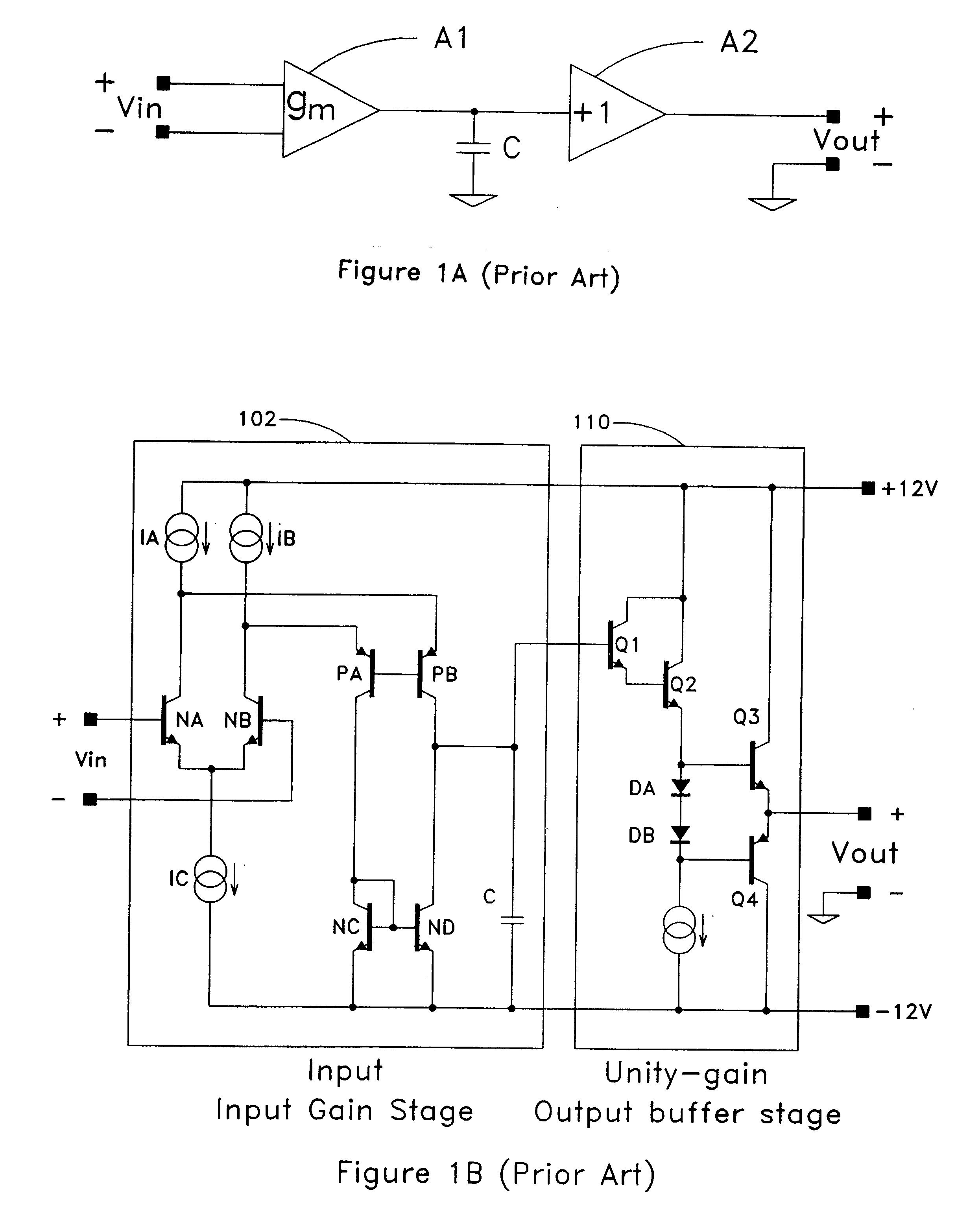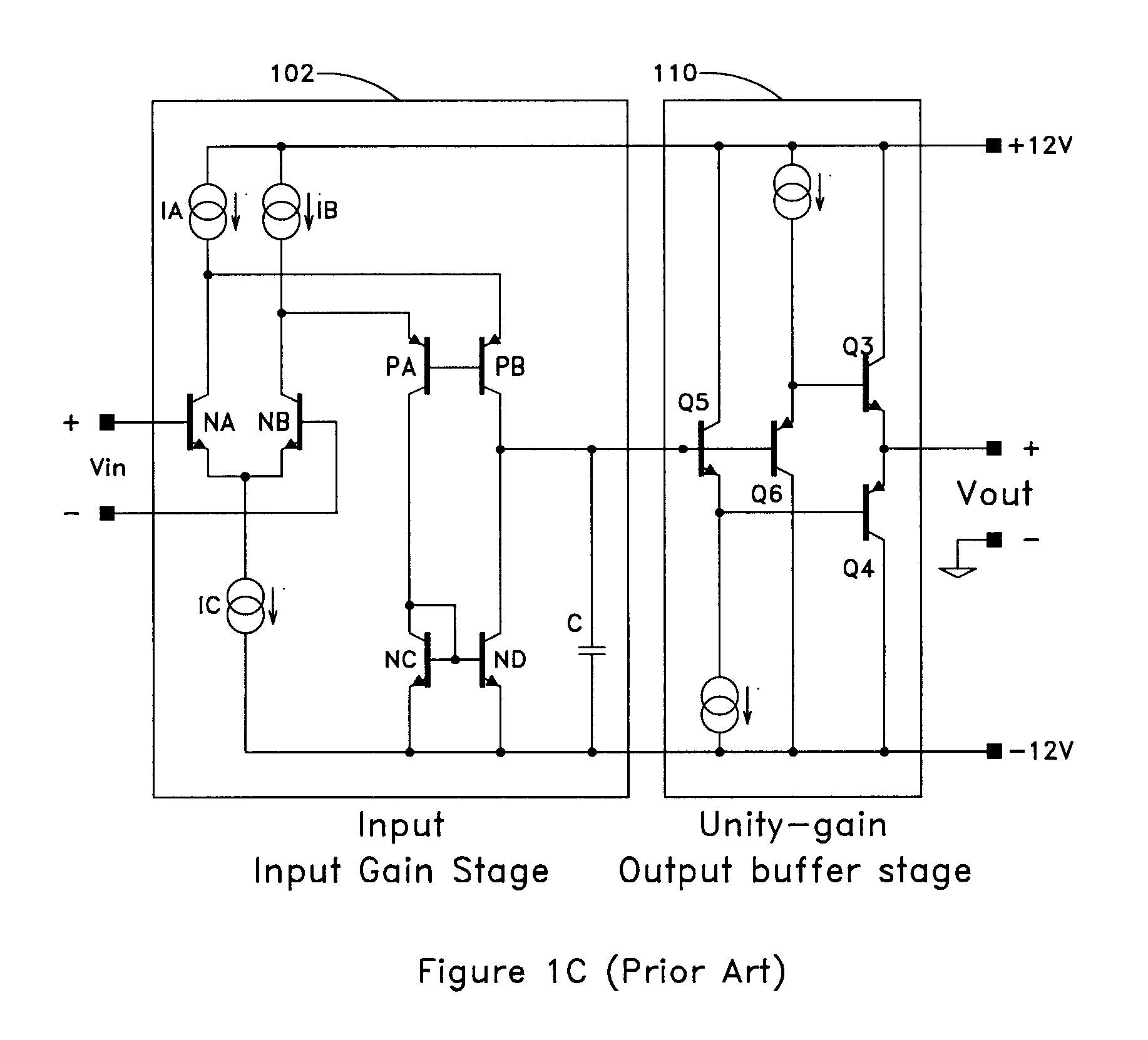Multiple-voltage supply power amplifier with dynamic headroom control
a power amplifier and multi-voltage supply technology, applied in the direction of push-pull amplifiers, multi-frequency code systems, push-pull amplifiers, etc., can solve the problems of unpractical "class c" operation, the power consumption of the central office line driving amplifier pair and the power consumption of the central office line is not easy to redu
- Summary
- Abstract
- Description
- Claims
- Application Information
AI Technical Summary
Benefits of technology
Problems solved by technology
Method used
Image
Examples
Embodiment Construction
FIG. 3 is a simplified schematic diagram of the output buffer stage with positive and negative power control circuits according to the invention. In FIG. 3, conventional monolithic, bipolar NPN and PNP transistors are indicated with reference designations as Nk and Pk, respectively, (k=1, 2, . . . ). Monolithic diodes are indicated with reference designations as Dk, (k=1, 2, . . . ). Diodes D1 and D2 may be conventional PN junction diodes, but are preferably implemented as Schottky diodes while the remaining diodes are conventional PN junction diodes. Conventional current sources and resistors are similarly indicated as ik and Rk, respectively, (k=1, 2, . . . ).
As is well known, the voltage drop (or rise) over a standard PN junction is roughly 600-800 mV, depending on operating parameters such as temperature (and thus on how much current is passing through the junction). All of the transistors used in the preferred embodiment of the invention are preferably fabricated on the same su...
PUM
 Login to View More
Login to View More Abstract
Description
Claims
Application Information
 Login to View More
Login to View More - R&D
- Intellectual Property
- Life Sciences
- Materials
- Tech Scout
- Unparalleled Data Quality
- Higher Quality Content
- 60% Fewer Hallucinations
Browse by: Latest US Patents, China's latest patents, Technical Efficacy Thesaurus, Application Domain, Technology Topic, Popular Technical Reports.
© 2025 PatSnap. All rights reserved.Legal|Privacy policy|Modern Slavery Act Transparency Statement|Sitemap|About US| Contact US: help@patsnap.com



